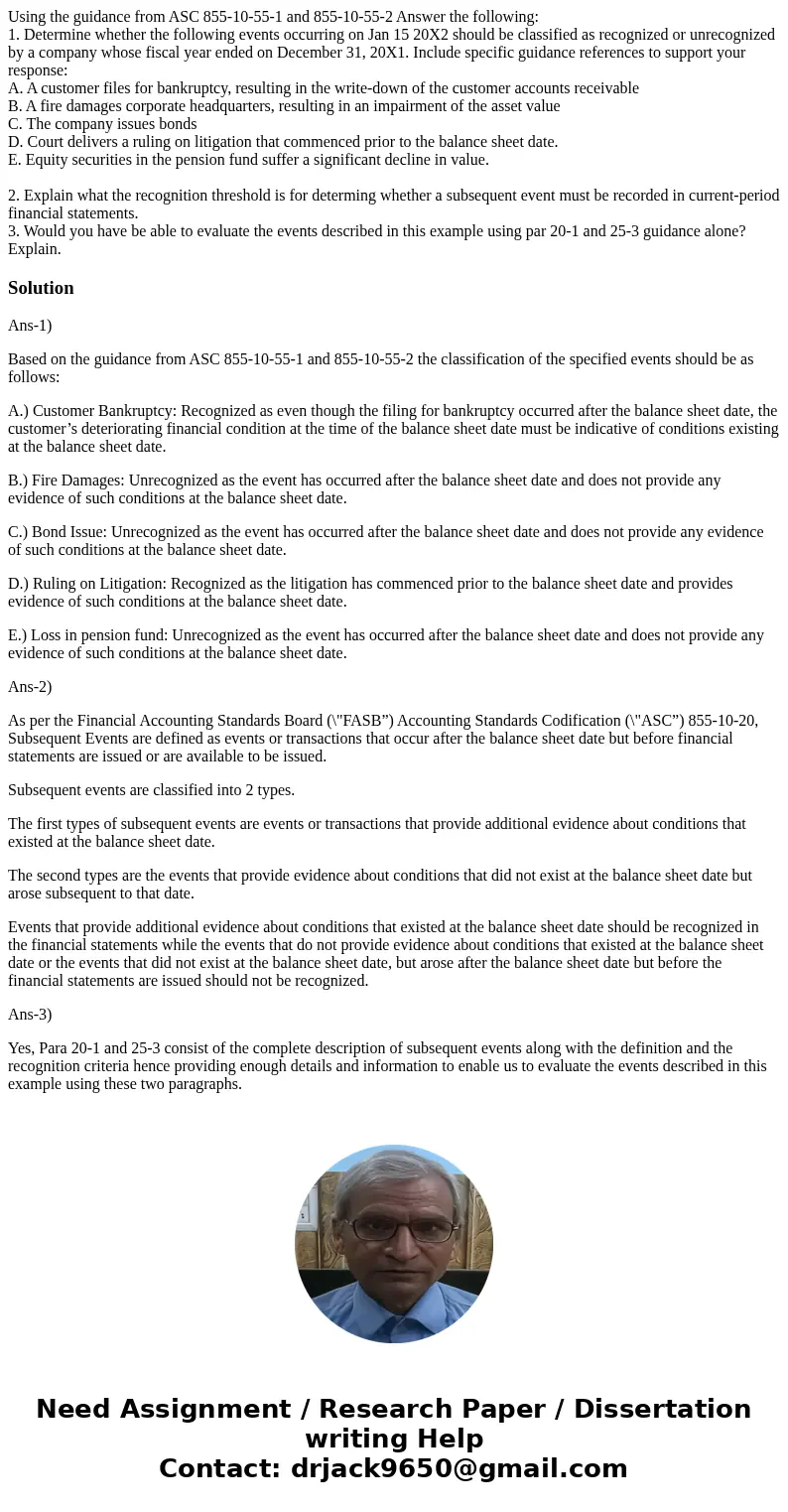Using the guidance from ASC 85510551 and 85510552 Answer the
Using the guidance from ASC 855-10-55-1 and 855-10-55-2 Answer the following:
1. Determine whether the following events occurring on Jan 15 20X2 should be classified as recognized or unrecognized by a company whose fiscal year ended on December 31, 20X1. Include specific guidance references to support your response:
A. A customer files for bankruptcy, resulting in the write-down of the customer accounts receivable
B. A fire damages corporate headquarters, resulting in an impairment of the asset value
C. The company issues bonds
D. Court delivers a ruling on litigation that commenced prior to the balance sheet date.
E. Equity securities in the pension fund suffer a significant decline in value.
2. Explain what the recognition threshold is for determing whether a subsequent event must be recorded in current-period financial statements.
3. Would you have be able to evaluate the events described in this example using par 20-1 and 25-3 guidance alone? Explain.
Solution
Ans-1)
Based on the guidance from ASC 855-10-55-1 and 855-10-55-2 the classification of the specified events should be as follows:
A.) Customer Bankruptcy: Recognized as even though the filing for bankruptcy occurred after the balance sheet date, the customer’s deteriorating financial condition at the time of the balance sheet date must be indicative of conditions existing at the balance sheet date.
B.) Fire Damages: Unrecognized as the event has occurred after the balance sheet date and does not provide any evidence of such conditions at the balance sheet date.
C.) Bond Issue: Unrecognized as the event has occurred after the balance sheet date and does not provide any evidence of such conditions at the balance sheet date.
D.) Ruling on Litigation: Recognized as the litigation has commenced prior to the balance sheet date and provides evidence of such conditions at the balance sheet date.
E.) Loss in pension fund: Unrecognized as the event has occurred after the balance sheet date and does not provide any evidence of such conditions at the balance sheet date.
Ans-2)
As per the Financial Accounting Standards Board (\"FASB”) Accounting Standards Codification (\"ASC”) 855-10-20, Subsequent Events are defined as events or transactions that occur after the balance sheet date but before financial statements are issued or are available to be issued.
Subsequent events are classified into 2 types.
The first types of subsequent events are events or transactions that provide additional evidence about conditions that existed at the balance sheet date.
The second types are the events that provide evidence about conditions that did not exist at the balance sheet date but arose subsequent to that date.
Events that provide additional evidence about conditions that existed at the balance sheet date should be recognized in the financial statements while the events that do not provide evidence about conditions that existed at the balance sheet date or the events that did not exist at the balance sheet date, but arose after the balance sheet date but before the financial statements are issued should not be recognized.
Ans-3)
Yes, Para 20-1 and 25-3 consist of the complete description of subsequent events along with the definition and the recognition criteria hence providing enough details and information to enable us to evaluate the events described in this example using these two paragraphs.

 Homework Sourse
Homework Sourse